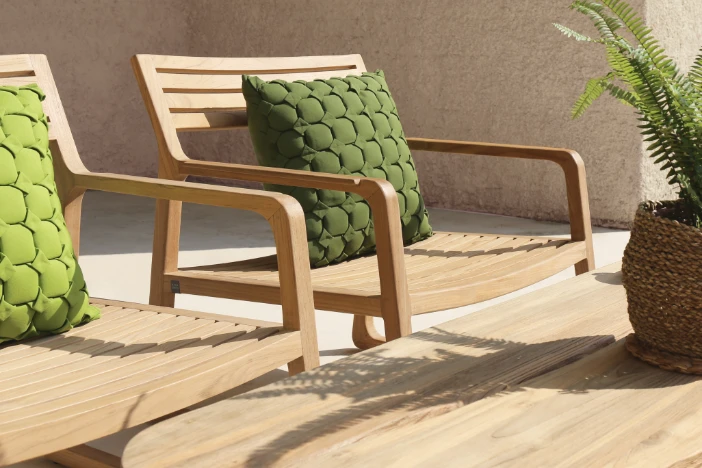
According to Cognitive Market Research, the global teak furniture market size was $58.9 billion in 2023 and is projected to have a compound annual growth rate (CAGR) of 6.2% from 2023 to 2030. Even if this just looks like a bunch of numbers to you, one thing’s for sure: teak furniture is in.
If you’re searching for new outdoor furniture pieces, then teak wood is definitely a material you should consider. But what exactly is it, why are people going crazy for it, and how can you make sure it lasts and looks great?
Read on to learn how to care for and clean teak outdoor furniture so your pieces remain stunning for years to come.
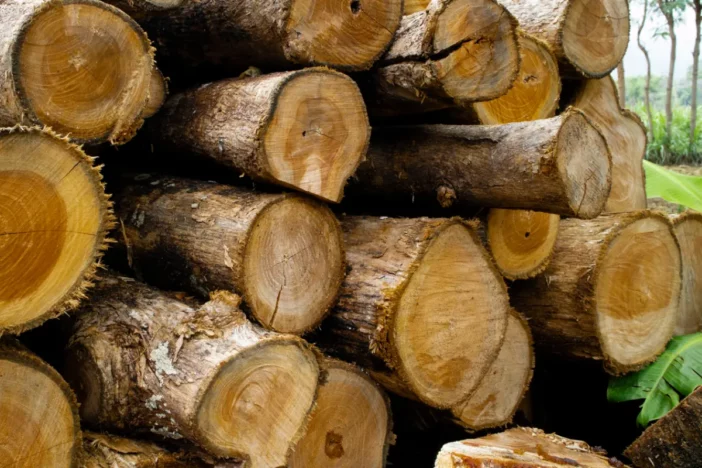
What’s Teak?
Teak is a dense and oily hardwood that’s native to Southeast Asia in places such as Burma, Indonesia, and Thailand. It naturally contains oils, so it’s resistant to water, rot, and pests. As you might’ve guessed, this makes it ideal for outdoor furniture, as it can withstand harsh weather conditions better than most other woods.
There are different grades of teak hardwood: A, B, and C. Grade A is the highest (it comes from the heart of the tree) and it has the most natural oils, meaning that it’s the most durable as well. We’d suggest staying away from Grade C teak wood, as it barely has any natural oils, is brittle, and has uneven coloring too.
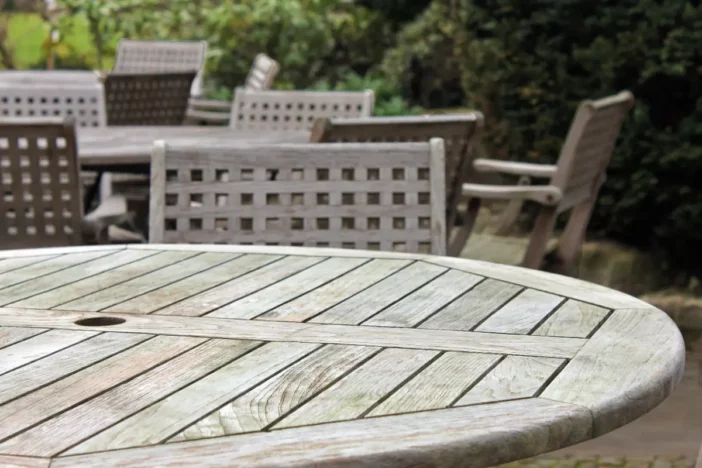
What’s interesting about teak is that when it’s exposed to the elements, it gradually turns a silvery-gray color, thanks to oxidation. This is called a patina, and it actually doesn’t affect the wood’s durability at all. However, some outdoor furniture owners prefer to restore or maintain the original golden-brown appearance for aesthetic purposes.
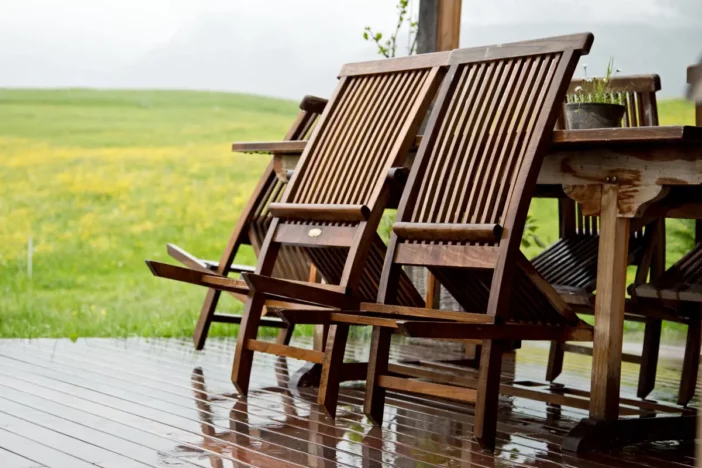
Why Is teak so popular?
Cognitive Market Research says that the demand for teak furniture and flooring is rising due to environmental awareness. As you’ve seen above, teak’s natural oils make it resistant to a number of outdoor things. That, plus its high density, means that high-quality teak furniture can last over 50 years, and with little maintenance too.
Teak is therefore a wonderful material for those who are trying to reduce their carbon footprints, but only if it’s responsibly sourced. They can get outdoor furniture that’s durable, and the pieces don’t need harmful treatments either.
Not to mention, it’s got a timeless and elegant aesthetic too. Fresh teak has a warm, inviting golden-brown hue that many homeowners love. And as time goes on, the wood color develops its patina without compromising strength. This means that this type of wood works well in modern, rustic, and traditional outdoor settings.
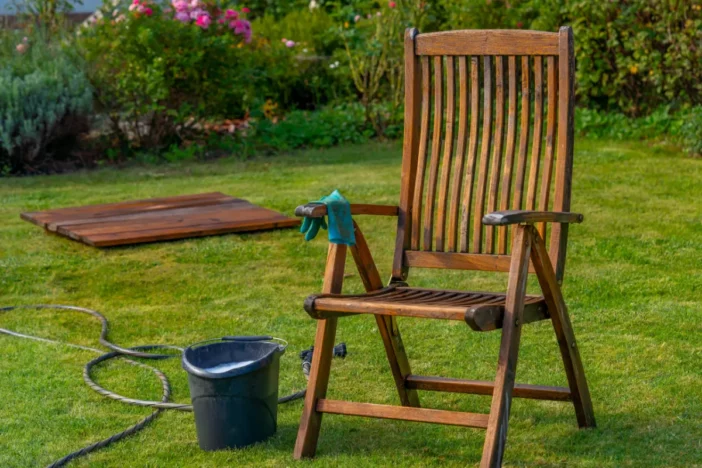
How to clean teak wood
The good news is that teak is a low-maintenance wood. It only needs occasional cleaning, but you need to ensure that you do it right. This will prevent dirt buildup and extend the lifespan of your teak furniture.
First, you’ll want to prepare a cleaning solution by mixing 1/4 cup of mild dish soap or vinegar with a gallon of warm water. You can always purchase a specialized teak cleaner, but the soap mixture will suffice as well.
Either way, you should get a soft-bristle brush or sponge and scrub along the wood grain gently. Don’t use abrasive pads, as these can scratch the surface and ruin your gorgeous pieces.
When you’re satisfied with the scrubbing, rinse off the furniture thoroughly with a garden hose. Only use a hose and not anything with high-pressure water streams. This can ruin the wood fibers by eroding them.
You can now let your furniture air dry completely. This is especially important if you want to apply any protective treatments.
In general, aim to clean your pieces at least twice a year, typically during the spring and fall. Warm and dry days are the best since the wood can dry completely after washing.

Cleaning stains on teak furniture
One of the best things about outdoor teak furniture is that it’s resistant to stains. However, that doesn’t mean that it’s impossible to get staining. So the most important thing you can do when you’ve had an accident is to clean the surface immediately.
Then, what you do next will depend on what type of stain it is.
Food and Drink
Mix some soapy warm water and grab a soft brush. Gently scrub the stain away, and then rinse thoroughly.
Oil Stains
Should you spill oil on your pieces, blot the excess off right away. You should then sprinkle baking soda over the stain and let it sit for 15 minutes to soak up the leftover oil.
After the 15 minutes are up, scrub gently with a soft brush and then rinse the surface off.
Dark Spots
Occasionally, you may get dark spots on your furniture from metal or wet leaves. If this happens, then mix equal parts white vinegar with water. Apply the solution to the stain, scrub the area lightly, and then rinse it off.
You can also use oxalic acid (wood brightener) mixed with water to remove rust stains.
Water Stains
Typically, water will evaporate and the leftover stains will disappear on their own after exposure to sunlight. However, if you want to speed up the process, just perform a little gentle cleaning.
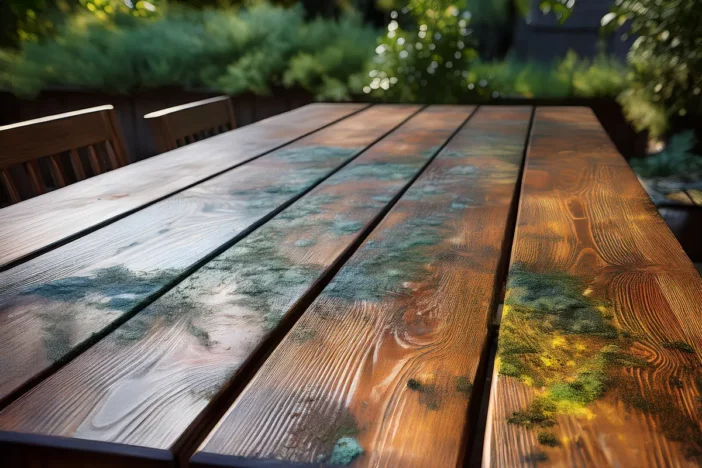
Cleaning mold and mildew from teak furniture
While teak garden furniture is resistant to moisture, mold and mildew can still develop on its surface if it’s in a humid environment. Luckily, these things are easy to remove from your pieces.
Just combine one cup of white vinegar with one gallon of water, or use a commercial teak cleaner that’s designed for mildew removal. Whichever you use, use a soft brush to scrub the affected areas lightly.
Rinse the furniture off with a hose to remove any residue. Then place the pieces in direct sunlight to help kill any remaining mold spores and prevent future growth.
If the mold on your furniture is particularly stubborn, use a diluted bleach solution by mixing one part bleach with 10 parts water. To prevent wood damage, ensure that you rinse the pieces thoroughly afterward.
Don’t want the mold to grow back easily? Then wipe the pieces down with a vinegar solution every few months.
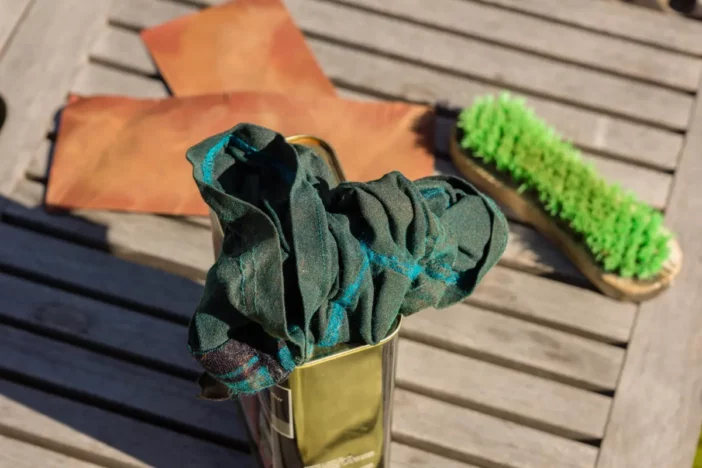
How to refinish teak outdoor furniture
You shouldn’t need to refinish your outdoor teak tables and chairs, but if the surface becomes rough or the deep stains persist, you may have no choice. Plus, sanding has the added benefit of restoring the golden-brown appearance of weathered teak.
To prevent damage while smoothing the surface, you should choose fine-grit sandpaper (220-grit). When sanding, do it along the wood grain; avoid cross-grain sanding, which can leave ugly and visible scratches. After sanding your furniture, remove the dust with a damp cloth before applying teak wood oil or sealer.
Once again, we’d like to emphasize that sanding should be a last resort. Excessive sanding can wear down the natural protective oils in the wood, so only do it if you have to.
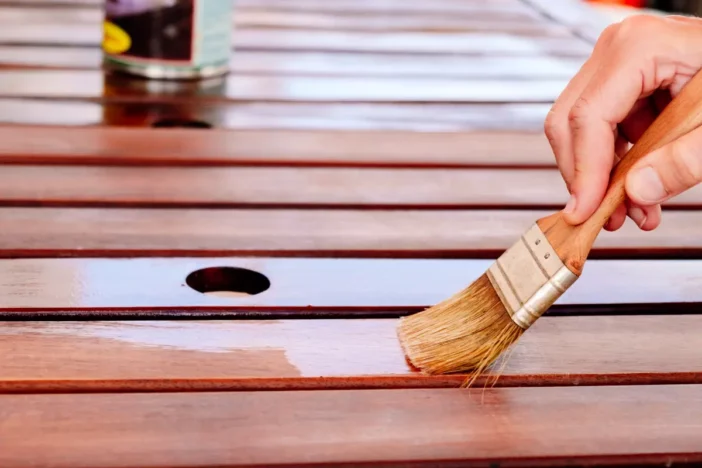
Restoring or altering teak color
If you want to restore your furniture or enhance its warm color, then you should clean teak thoroughly before oiling. Plus, you need to let the wood dry completely before applying oil; otherwise, you’ll trap moisture. You can lightly sand the wood for better absorption of the oil too, but it’s not required.
To apply the teak oil, use a lint-free cloth. Use broad and even strokes, and wipe off excess oil to avoid sticky buildup. Then, let it dry fulling before using the furniture or placing the cushions back on it.
Teak Sealer vs. Teak Oil
Often, there’s confusion about teak sealer and oil, so let’s break down the differences.
Generally speaking, teak oil is a temporary solution while teak sealer is a long-term one. You’ll have to reapply the oil every one to three months, whereas sealer only needs to be reapplied once a year. So for a low-maintenance option, go with sealer.
What not to use on teak furniture
We’ve already mentioned above that you shouldn’t use a pressure washer or hard brushes on your teak furniture since both can strip away the natural oils, weaken the wood, and scratch the surface. Steel wool should also be avoided for the same reasons.
Try not to use harsh chemicals on your pieces either. We did say to use a diluted bleach solution earlier, but that’s only in cases of stubborn mold. Otherwise, don’t use ammonia or other strong detergents since they can dry out and discolor teak.
While you can use varnish and polyurethane on this wood, we don’t recommend doing so. The coatings can crack and peel over time, and you’ll have to completely remove them before reapplying.
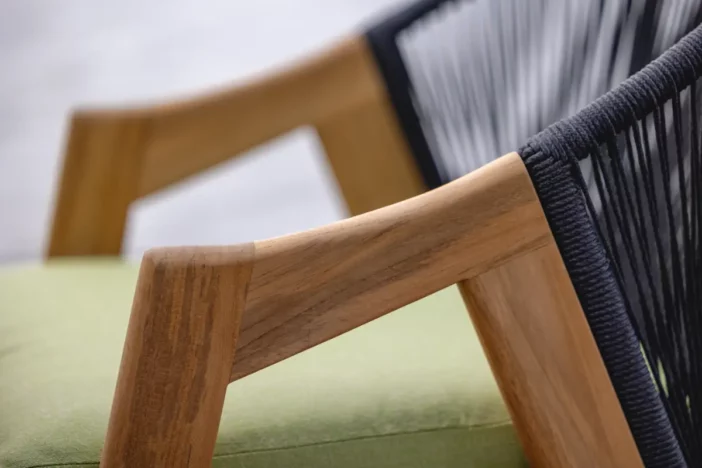
Take good care of your teakwood pieces
Teakwood is an excellent material, especially since it’s environmentally friendly, durable, and easy to maintain. As long as you clean your pieces routinely and practice careful stain removal, you’ll have beautiful outdoor furniture for the foreseeable future.
Whether you prefer its natural silver-gray patina or want to maintain its golden-brown hue, there are numerous ways to keep your teak furniture looking its best. Your guests will certainly be impressed!





Leave a Reply